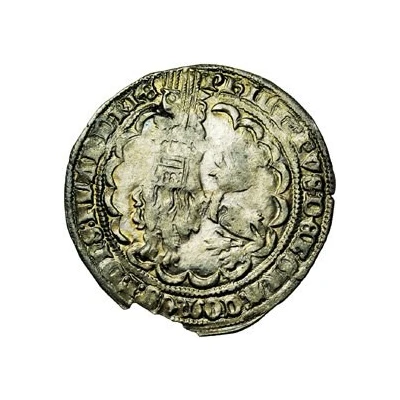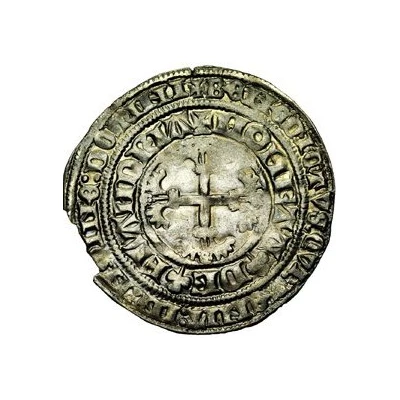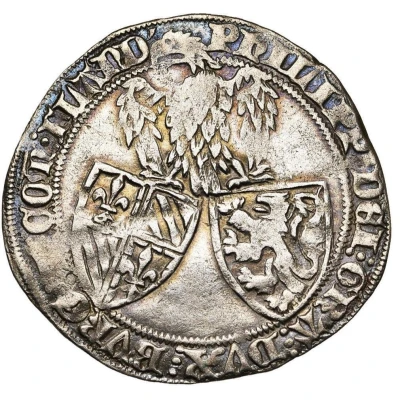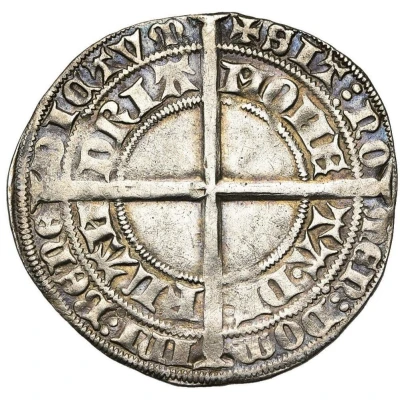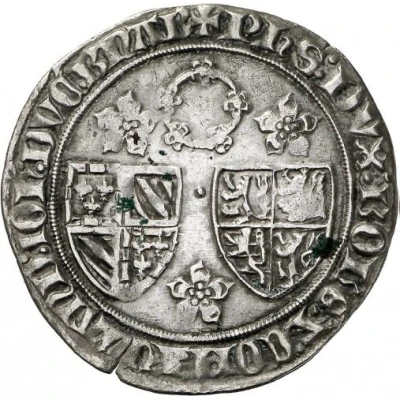
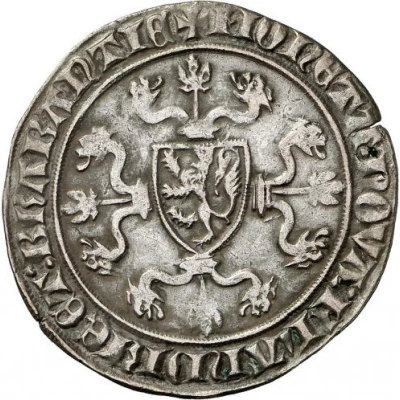

© Jean Elsen & ses Fils s.a.
2 Groats "Rozebeker" - Philip the Bold ND
| Billon (.479 silver) | 4.27 g | 30 mm |
| Issuer | Burgundian Netherlands (County of Flanders, Belgian States) |
|---|---|
| Duke | Philip the Bold (1384-1404) |
| Type | Standard circulation coin |
| Years | 1384-1385 |
| Value | 2 Groschen (Groot) |
| Currency | Groot (864-1506) |
| Composition | Billon (.479 silver) |
| Weight | 4.27 g |
| Diameter | 30 mm |
| Shape | Round (irregular) |
| Technique | Hammered |
| Orientation | Coin alignment ↑↓ |
| Demonetized | Yes |
| Updated | 2024-10-04 |
| Numista | N#97998 |
|---|---|
| Rarity index | 97% |
Reverse
Shield of Flanders on top of floriate cross tipped with 8 dragons' heads.
Script: Latin (uncial)
Lettering: ✠ MONETA : NOVA : FLANDRIE : ET : BRABANTIE.
Lettering (regular font): ✠ MONETA : NOVA : FLANDRIE : ET : BRABANTIE.
Translation: New coinage of Flanders and Brabant
Comment
Ref.: Deschamp de Pas. Lam. VI, 2As part of a monetary union between Flanders and Brabant, the same type was struck in both places.
This coin of Flanders only differs in having the arms of Burgundy on the left obverse, and having Philip's name and title appear first in the obverse legend
Interesting fact
One interesting fact about the 2 Groats "Rozebeker" coin is that it was minted during a time of great political and economic change in the Burgundian Netherlands. Philip the Bold, who ruled the region from 1384 to 1404, implemented a number of reforms aimed at strengthening the local economy and increasing trade. The introduction of the Rozebeker coin, which was named after the Flemish city of Roesebeke, was likely part of these efforts. Despite its relatively low value, the coin was made of billon, a silver-copper alloy, which suggests that it was intended to be a durable and reliable form of currency for everyday transactions.
